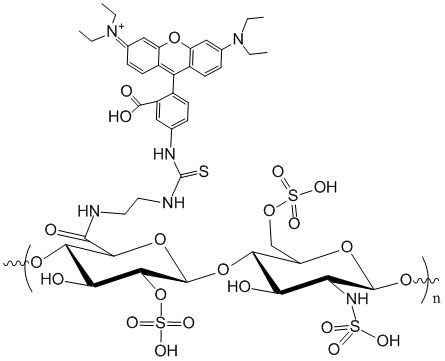Properties
Heparin is a member of the glycosaminoglycan family of carbohydrates (which includes the closely related molecule heparan sulfate) and consists of a variably sulfated repeating disaccharide unit. The most common disaccharide unit in heparin is composed of a 2-O-sulfated iduronic acid and 6-O-sulfated, N-sulfated glucosamine, IdoA(2S)-GlcNS(6S).
Heparin CAS#: 9005-49-6
References
1. Heparin Mimics Extracellular DNA in Binding to Cell Surface-Localized Proteins and Promoting Staphylococcus aureus Biofilm Formation, mSphere 2:e00135-17, 2017, Text.
2. Heparin-Engineered Mesoporous Iron Metal-Organic Framework Nanoparticles: Toward Stealth Drug Nanocarriers, Advanced Healthcare Materialsï ¼Å’2015, 4(8), pp 1246-1257.
3. Modified Fluorescent Technique, Using Rhodamine, for Studies of Rhizobium japonicum-Soybean Symbiosis, Appl Environ Microbiol. 1979 June; 37(6): 1243-1244.
4. Binding of heparin to antithrombin III: The use of dansyl and rhodamine labels, Archives of biochemistry and biophysics, 1980, 205(2), 315-22.
5. ApoE: In Vitro Studies of a Small Molecule Effector, Biochemistry, 2016, 55 (18), pp 2613-2621, Text.
6. Transmembrane Protein 184A Is a Receptor Required for Vascular Smooth Muscle Cell Responses to Heparin. Journal of Biological Chemistry. 2016 Mar 4;291(10):5326-41. Text.
7. Regulatory mechanisms of tau protein fibrillation under the conditions of liquid-liquid phase separation, PNAS, 2021, Text.
Click here to view an expanded list of hundreds of publications citing Creative PEGWorks products.


